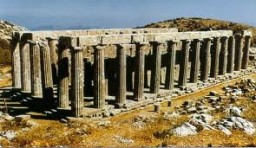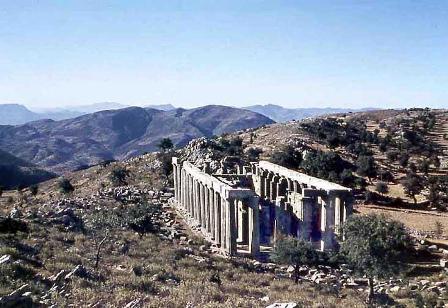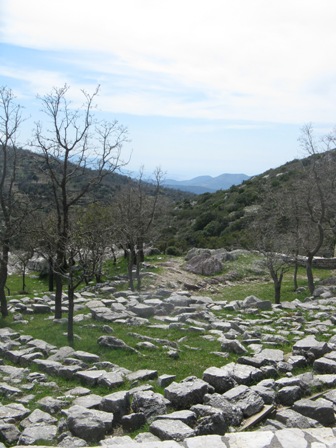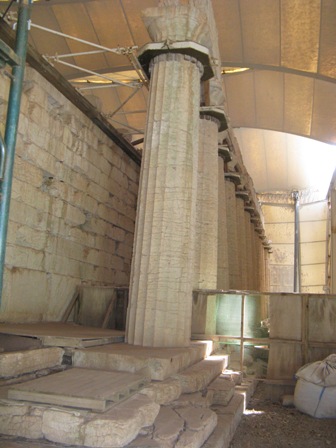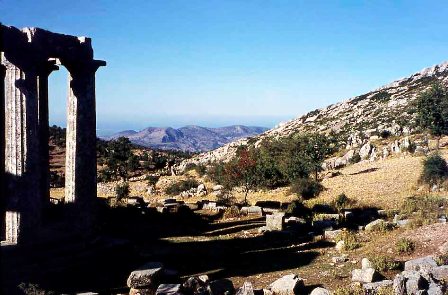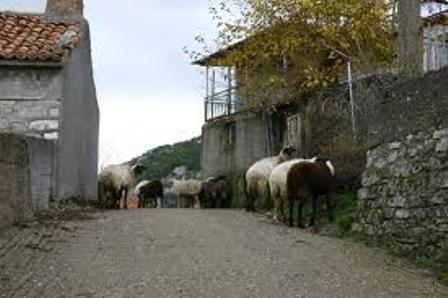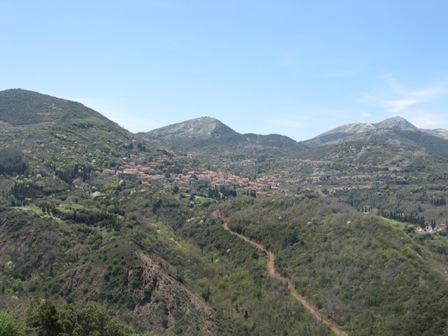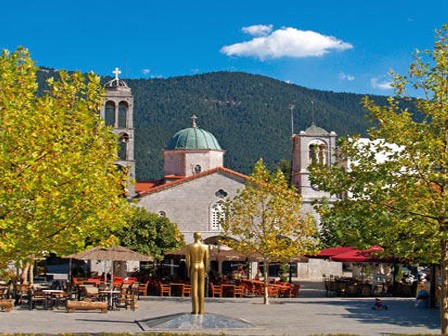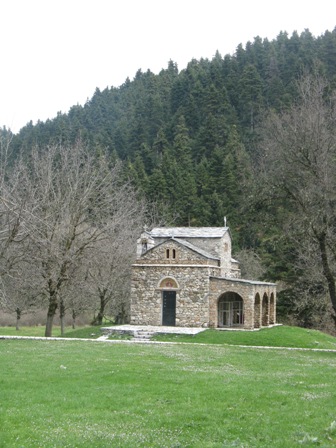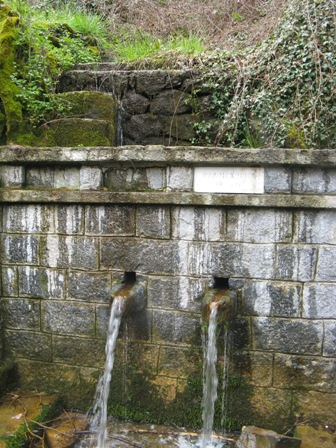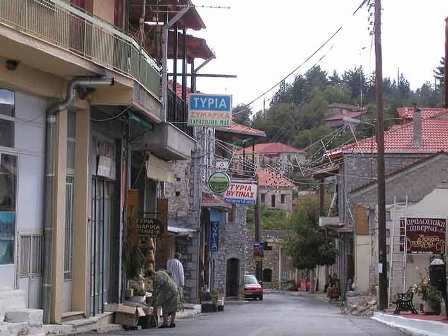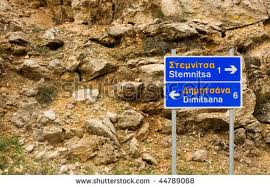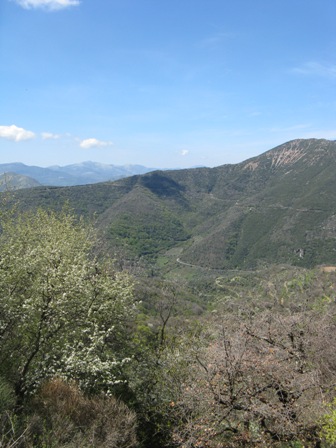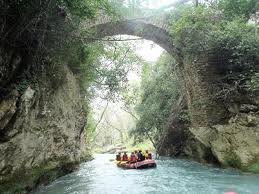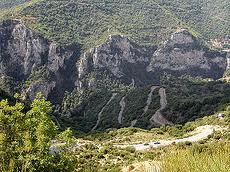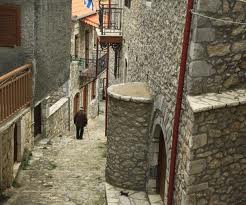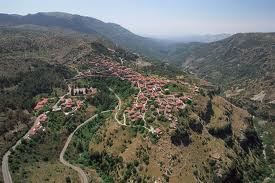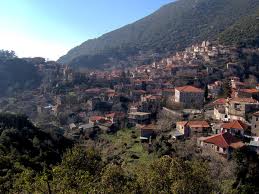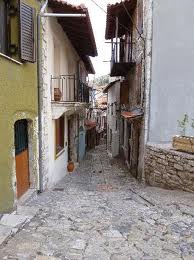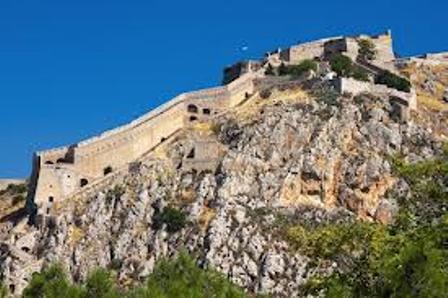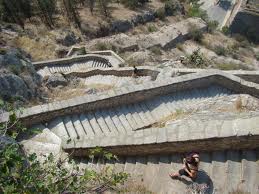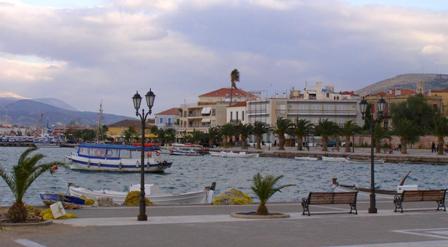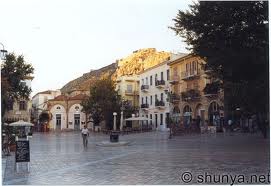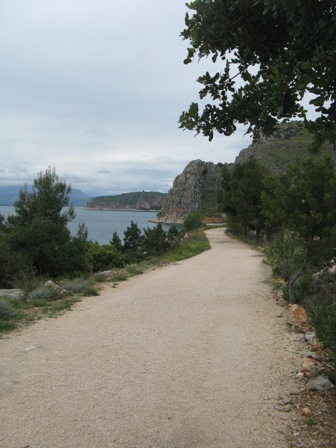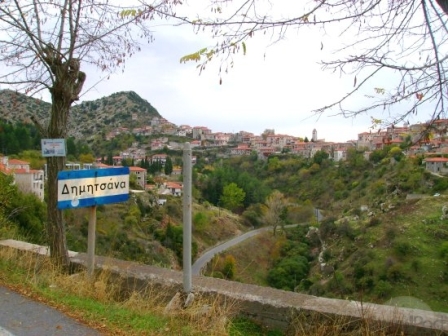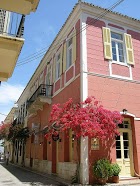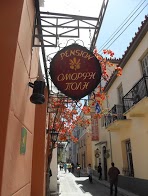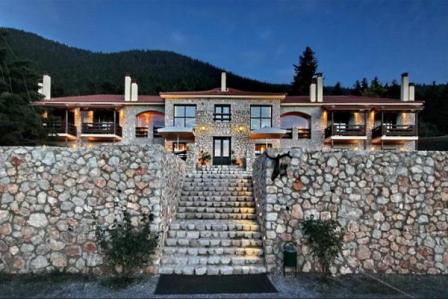Greece is going through a rough time. Unemployment is high and wages have nose-dived. What hasn’t changed is Greek hospitality, which continues to be boisterously generous. Though times may be hard, the Greek spirit is strong.
If Greece has a heartland, arguably the Peloponnese is it. Many of the nation’s most famous ruins are here: Olympia, Epidaurus, Mycenae, Corinth and Sparta spring immediately to mind. Less known is the temple of Bassae dedicated to Apollo Epikourios, or Apollo the Helper.
Built in the 5th century BCE, designed by Iktinos (architect of Athens’ Parthenon and Temple of Hephaestus), it’s one of the best preserved monuments in all of ancient Greece. The setting is magnificent, high up in the Arcadian mountains (now part of the province of Messenia), the site commands its position just as you’d expect a temple dedicated to the supreme sun god would.
At over 1,100 metres in a little valley on the side of Mount Kotylion, Bassae was effectively saved by its remoteness. Most ancient temples were altered to serve Christianity or worse, destroyed as examples of paganism.
Bassae survived because it was (and is) so far off the beaten track, nearly everyone forgot it.
The first time I visited, I was simply awe-struck. The temple stood alone in a near perfect state of preservation. Acid rain hadn’t taken much of a toll on its limestone and marble, though snow and ice had caused cracks to appear in some of the pillars. Now the temple is covered by a huge tent while restoration work is undertaken.
The light on Apollo’s house isn’t so bright these days. Hopefully, when the work is completed it will be uncovered to the sun and elements as I believe it should be.
A narrow two-lane road winds up the mountain from tiny Andritsena to Bassae. Signs to the temple are few and not clearly marked. In winter the road is mostly impassable and I definitely wouldn’t want to be caught up there during a summer’s lightning storm. The site is very exposed but the views, particularly to the south are magnificent. On a clear day, the blue sea glimmers mirror like in the far distance.
There is no nearby accommodation. Andritsena is approximately 15 kilometres away, plenty of pension guesthouses and small hotels there.
Walks around the mountains and valleys from Andritsena are the best way to explore this beautiful pocket of Arcadia.
I had the whole temple and its surrounds to myself during my first visit. There were no other travellers on that autumn day years ago. Recently, I repeated the experience. On a perfect spring’s day, I had the place to myself again. Three Israeli travellers left ten minutes after I arrived. I was alone at Apollo’s sanctuary for the next two hours.
Bassae was inscribed on to the World Heritage List in 1986, the first ancient site in Greece. What’s it like having a UNESCO World Heritage site all on your lonesome for a day?
I felt privileged of course. Then I felt completely alone. The wind whistled through poppy flowers and wild olives. Scattered around the site white limestone boulders glistened in bright sunshine, remainders of the thriving ancient sanctuary. I was reminded again of an essential fact: we come into this world alone and we leave it the same way. People we meet along the way, loves lost, loves gained; constant friendships are what matter most but sometimes it’s necessary to be alone. Better to understand the journey.
I returned to Greece for nostalgic reasons. Always one of my favourite countries, it has also confounded me while simultaneously delighting me.
Over the years my feelings haven’t changed much.
An old friend once told me, ‘Never forget that Greece is halfway between Italy and Syria and it has a lot more in common with Syria.’ He was being a wag, but a Grecophile wag nonetheless.
Syria’s current crisis is an ongoing disaster driven primarily by religious differences, a dispute over land rights and the corrupt Assad regime. Syria is obviously not Greece.
Italy’s latest national election illustrated continuing political dramas. For an advanced European nation with a sizeable economy, Italy is a country whose factional differences cause it to lurch from right to left or left to right like a pendulum that never reaches equilibrium. Italy is obviously not Greece.
Greece however is still caught between the two, half occidental, half oriental. Leaving religious histories aside, Greece has more in common with Turkey than it has with Spain, despite the Mediterranean connection.
Government mismanagement has taken a huge toll on Greece’s economy. Wealthy Greeks are masters at hiding income as tax evasion has almost become the national pastime. More money leaves Greece than stays in it and now the whole country has come to a virtual standstill while a new government sorts out its relationship with the EU. Funds provided by the EU were spent somewhat recklessly or worse still, squandered on political follies.
Proud hard working middle class Greeks, whose incomes have been severely reduced or cut altogether have been reduced to begging for medications, food and shelter.
In a society where family relationships still remain preeminent, rates of homelessness have sky-rocketed.
Latest data indicates a shift towards a less dire economic situation but the problems will never be solved until Greeks understand that paying taxes is a civic duty. If they’re not happy with how their politicians spend the revenue, vote them out.
It’s a curious scenario to witness such extreme political alienation in the land that birthed democracy. All Greeks have been affected by the economic disaster.
Maybe I’ll never fully understand Greece but I’ll continue to try. The countryside is blessed with stunning natural beauty. Greek reliance on hospitality as a key national character trait, though challenged, continues to be the cultural norm. Historical patrimony remains an international draw card and Greeks are rightly proud of their past.
During this recent visit, the Peloponnese drew me into its charms once again.
I hired a car in Athens and headed west along the new motorway. Since the Athens Olympics of 2004, Greece was afforded more funds from the EU to improve infrastructure projects, spanking new motorways among them.
The trip to Corinth from Athens’ new airport took fewer than two hours. Not so long ago, the road west to the Peloponnese was overcrowded and narrow. The same journey could take up to six hours, particularly on holiday weekends when upwardly mobile Athenians left town for their country villas.
Zipping past modern Corinth, as ever the mountain outcrop of ancient Acro-Corinth looming over the gulf and surrounding countryside, signalling the end of urban sprawl, I sped onwards towards Tripoli, exiting the motorway at the road to Vytina, my base for a few days exploration of the province once called Morea by Venetian and Ottoman conquerors and Arcadia by classical Greeks.
Vytina has grown into a get-away spot for townies trying to escape the city’s hubbub while international travellers focus on island hopping or getting as quickly as possible from Delphi to Olympia and back to Athens.
Random and narrow back lanes criss-cross the countryside around Vytina. I got lost a number of times while searching for a shrine to Theodoros Kolokotronis. The shrine became a chimera of sorts; I never found it. Instead I discovered a sacred spring and a tiny chapel in the woods.
No one else was there, a state I was getting used to after a few days in this part of the Peloponnese.
Many villages have emptied, there’s no work and people leave to seek work in the big cities. The countryside is depopulated as a consequence.
But some villages survive. Domestic tourism helps while wealthy Athenians use parts of ancient Arcadia as boltholes to escape Athens’ summer heat and crowds. International travellers stick to the traditional archaeological sites, the route from Mycenae to Epidaurus to Olympia, across the new Rion-Antirion bridge to Delphi and back to Athens, mostly giving the Peloponnesian interior a big miss.
Three villages are considered the gems of upper Arcadia: Vytina, Dimitsana and Stemnitsa.
Mostly overlooked by travellers, this isn’t the Greece of tourism brochures and online entreaties. No white houses or sandy beaches here. Instead, russet tiled roofs, grey stone houses, pine forests, isolated valleys and snow-capped mountains dominate the central Peloponnese highlands.
Roads are rough, not well signed and mostly empty. The only traffic I encounter is on the motorway leaving Athens. Sheep cross the road willy-nilly. Shepherds are moving their flocks to summer pastures higher up the mountains. Donkeys graze along roadsides while chickens peck at grubs emerging in warmer weather.
The Loussios River flows through a canyon below Dimitsana.
A track follows the river for approximately ten kilometres and is one of the region’s best walks. In summer local operators run white water rafting trips through the Loussios Gorge.
Walkers should beware that during heavy rains the river rises very quickly and may inundate the track.
Both Stemnitsa and Dimitsana are stunningly sited villages, perched almost precariously along steep ridgelines with cliffs falling away on both sides of each village.
This part of the Peloponnese was integral in the Greek War of Independence between 1821 and 1832, sheltering many of its heroes during the revolutionary period that heralded the birth of the Greek state.
The revolutionary hero and general, Theodoros Kolokotronis, controlled many of his battle campaigns against the Ottoman Turks from a base in Stemnitsa. I never did find the shrine dedicated to his memory. No matter, the wild country still evokes places where an old revolutionary could easily hide out even today.
By the way, his son Ioannis Kolokotronis, (nicknamed ‘Gennaios’, meaning ‘brave’) was baptised in Stemnitsa. He later became the last Prime Minister to serve under King Otto.
From Arcadia I visited Napflio, the first capital of the Greek Hellenic Republic from 1821 until 1834 when the capital was moved to Athens. It was the capital of the ‘Kingdom of Morea’ under Venetian rule in the late 17th and early 18th centuries until the Ottomans captured the city in 1715. The Venetians built the enormous Palamidi castle to protect it from Ottoman invasion, to no avail obviously. The Ottoman Turks recaptured Napflio anyway.
The path up to Palamidi Castle is steep but the view from atop is well worth the effort.
It was the Venetian empire’s last major construction undertaken overseas. The castle dominates the city to this day. That’s quite a history for a small, albeit ancient, city.
Napflio makes an excellent base from which to explore nearby sites such as Epidaurus, Mycenae and Tyrins with its original Cyclopean walls.
Nowadays, Napflio is a fairly laid-back seaside town on the Argolic Gulf, again overlooked by most international travellers. Most of the narrow central streets are reserved for pedestrians only and the harbour esplanade is quite lovely.
It’s a place that embraces the sea and its history in equal measures. The seaside walk leading from town to a beach and camping site some ten kilometres along the Argolic Gulf is simply wonderful. Napflio is a town made for walking.
The Peloponnese has a special place in my own heart. It’s where I first fell in love with this always consternating sometimes crazy country. That loving feeling has been constant ever since I fell under the spell of lonely Bassae and Arcadian vales.
Go there. I hope you feel the same way.
Naked Facts:
Rather than visiting Greece on a packed super-ship cruising the islands or on board a full coach touring the major archaeological sites, consider a small scale alternative, the do-it-yourself option with local help.
Two smart entrepreneurial Greek women started an unusual hotel booking service business a few years ago. While travelling around their beloved homeland they’ve sought out small privately owned and run hotels, brought them together under one banner and put their collection out to the travelling public.
Before this bespoke booking service was created, ‘buyer beware’ circumstances governed internet searches for boutique country accommodation in Greece. Small inns or farm stays chosen at random via an internet search may not always prove to be so attractive when experienced in person. Hard enough suffering the consequences of making unfortunate choices; consider also the time spent organising multiple accommodation selections. Anyone trying to arrange sequential hotel bookings unless fluent in Greek, would find the process difficult. Not anymore.
I stayed in Napflio at the Omorfi Poli Hotel, six rooms in a beautifully restored townhouse a few minutes walk from the town’s harbour and its assortment of waterside restaurants and cafes.
After a few nights I felt like a member of a family, just what I needed after weeks of travelling solo.
The Guest Inn collection is a carefully selected group of reasonably priced small family run guesthouses spread around the country, many of them in off-the-beaten-track locations.
See www.guestinn.com for details, suggested itineraries and bookings.
In Vytina, I stayed at another family run hotel, the Grand Vytina. It’s not really a grand hotel, more a typical middle-ranged boutique guesthouse. Rooms are well maintained but basic. Breakfast was very ordinary.
The best thing about the Grand Vytina is its location about 500 metres pleasant walk from the town centre.
Naked Eating:
In Vytina, the Taverna Klimataria is the best in town. Run by a lovely couple, Eleni and Theodoros, (Eleni’s English is excellent), the menu is entirely comprised of locally sourced produce cooked with care and love. Arcadian honey is also sold here.
In Napflio the restaurants Amalou on the town’s main central square and Omorfi Napflio on the harbour esplanade walk are both recommended. I ate reasonably good meals in both, though friendly service won out over slightly above average food.

